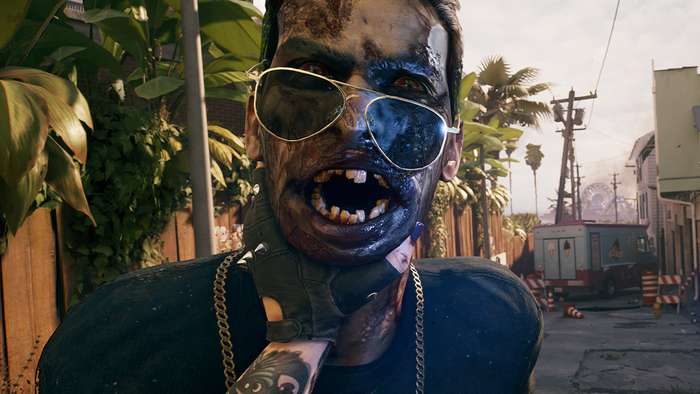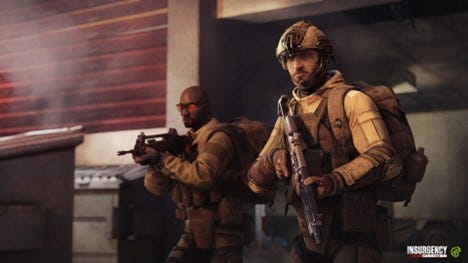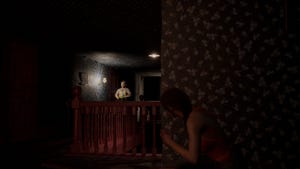Possibilities for Innovative and Unique Writing in Visual Novels
With visual novels gaining relevance in the West, a need for a unique style has risen in the community. This post raises a few points on how visual novels primarily work for the benefit of the writer. Originally posted as a topic at Fuwanovel.

Considering there aren't many professional writers in the visual novel writing field nor any actual literary tradition, the Western Visual Novel scene finds itself in need of stories with as much impact as the Japanese titles Steins;Gate, Clannad and Fate/Stay Night - which have gained adaptations to other media as well as great reception, sales-wise included. This is not to say the West hasn't produced great titles such as Katawa Shoujo (my absolute favorite visual novel), Cinders and Long Live the Queen, but we still lack titles capable of interacting and affecting other media.
It may take a certain cultural approach and healthy business practices to consolidate an industry, even moreso if we're talking about a niche genre in games. However, we must also study the intricacies of the medium in order to create diversity in both form and content. As visual novels are all about story and said story is told as a novel, the most immediate question is: does good writing in literature equal good writing in VNs?
I figured I'd raise some points about how writing in visual novels can be more effective, taking advantage of the medium and the kind of experience that it is. After all, the notion that "visual novels are all about art and text with music mixed in" is thrown around almost nonchalantly, but what does this actually mean for the writer? How does the interaction between art, text and sound affect the writing?
Now, I'm going to talk about the most basic interactions between a reader and a book, a player and a game. Pardon me in advance for saying things that will make you go "well, duh!", but the intention is to deconstruct our relationship with the medium to a level from where we can build something entirely new.
Character x Narrator

I don't intend to encompass all kinds of novels in this analysis. For the purposes of this article, consider the most popular kind of narrative-driven novels, the best-sellers.
In novels, the story happened. In visual novels, the story is happening. The verb tense used in the prose doesn't change that, but, rather, the fact that most books use past tense and most visual novels use present tense probably comes from how writers noticed the action, in a visual novel, is an action, not an impression. No matter how detached and descriptive a narrator is in a book, you'll always see the impression of an event, whereas VNs show events on a screen, much like movies. This is innate to the presentation. If you promote the visual experience to the same status as the text, you bring stories to the present. Illustration in books comes with a hidden "kinda like this" tag, almost an afterthought. In visual novels, however, they are part what is going on, even if it's just a sequence of static pictures.
This probably makes writing in VNs closer to screenwriting (which, unsurprisingly, are also written in the present tense) than one might think. Indeed, the notion that events are scripted instead of described places a lot more emphasis on characters than on narrators - even in first person narratives, which means the reader has more freedom, so to speak, to evaluate what is going on by themselves.
What this means for the writer: Literature loves their unreliable narrators as a modernist feature. In visual novels, however, the narrator is always unreliable because the reader always has other points of reference. To be perfectly practical, it doesn't matter whether a character thinks another character is beautiful: we can judge that by ourselves because we can see them. On addition, action has the upper hand against impression: in novels, speech is often followed by a statement about the situation, who said it or what was the impact of said speech in the action's flow. This is unnecessary in VNs - unwelcome, even - due to the fact that we already know who said what. In other words - while in a novel the narrator aggregates the dialogue to create a flow, in a VN the dialogue is the flow.
How a writer can take advantage of this: Describe things that arenot happening on the screen in order to induce confusion on the reader; subtext can be delivered without the need of any internal monologues as the situations carry themselves forward, dramatically speaking; speaking of internal monologues, these can be delivered while something else is happening. On screen, we see the animation of a character speaking and trying to get your attention, but the text reads the thoughts of the protagonist towards his favourite bubblegum flavours; character non-verbal interaction can be shown on one level, but talked about on another level, leaving space for less physical descriptions and more feelings towards them; you can turn impressions into actions like in comic books by materializing a particular quirk of a character or a special expression without repeating yourself, thus allowing for more fluid characterisation.
Textbox x Screen

In the last point I talked a little bit about the duality of textbox and screen, but let's expand that. A book is, more often than not, a series of textboxes the size of pages. A movie is, more often than not, a series of screens that last for one frame each. Visual novels are something in between, which means both dispute your attention. Generally speaking, you can't look at an element on screen and read at the same time, so either you end up flickering your eyes between one and the other or you finish reading and then pay attention to what's on screen.
The two most common textbox formats are ADV (in which the box occupies only a part of the screen; see Katawa Shoujo, Clannad, Ever17) and NVL (in which the textbox fills almost the whole screen or the whole screen; see Fate/Stay Night, Tsukihime, Kira☆Kira). Be aware of how each approach deals with your attention: ADV gives primacy to the screen and NVL steals this primacy to the textbox. This is obvious, but think about the effects of switching back and forth. This is important because it's in full control of the visual novel and can anticipate moments of climax, resolution, bursts of surprise or deep thought - in fact, the effect of break is created regardless of the content.
The human eye is automatically drawn to movement and, for that reason, not displaying the text in a huge chunk of text is more interesting. However, consider the possibility of what you can't read being just as important as what you can read. Intentionally drawing a reader's attention to a specific point on screen and away from something else constitutes a great part of the experience. Take the player out of control of his own reading, challenging them to gather the information they want. This means that a writer can make a character speak so fast the protagonist and the reader can't understand it, pretty much making the interaction matter to both on the same level and putting them on the same shoes by force.
What this means for the writer: Text is form as much as it's content. There is a certain character in Fate/Stay Night that speaks really strange in his first appearance and this is shown both by voice and by text. The eerie impression, then, comes from both angles and make him a truly terrifying character. So the writer must pay attention to the fact that what's written may be the most important, but where it's written, for how long and how much is written are important factors to be considered and played with, so as to catch the player's attention all the time and to whatever you want.
How a writer can take advantage of this (aka cheats & tricks): You can animate text or blend it to the background. Cave! Cave! Deus Videt Episode 0 does a great job in using text as a graphical element and so should you. After all, your prose may be enhanced by the gorgeous visuals, but are also competing with them for the reader's attention at any given time. Knowing this, articulate strategies with your art department to always have full control and knowledge of where the player is looking at. Or, at the very least, a pretty good guess. This way, you can, for example, display text outside the customary box and for only a fraction of seconds, engaging the player in active reading. This is particularly effective in mystery and horror visual novels.
Rhythm

Text in visual novels has a certain flow, a certain variation of expectancy and information, bait and reward. Of course, all text does, not only fictional. It's a basic element of style in writing. However, there is a very interesting catch in visual novels that must be addressed: the flow belongs to the writer.
So, what, isn't it the also case with literary prose? Turns out it isn't. Rhythm and flow in literature belong to the reader. Simply put, they decide the speed, what to anticipate and how to balance the search for information with playing along the normal read order. If one wants, one can read the last page of a book before anything else simply because it's their way to do things. This is extremely important because any attempt at style is an attempt to change how the player reads. In visual novels, this can be enforced. However, it is also a responsibility.
This can go as far as reading speed. Sure, it can be adjusted in the settings panel, but the difference between one word and the next basically can't. Once again, it's the perfect opportunity for a writer to control or predict the habits of the reader for maximum emotional impact. On the other hand, the writer must ensure that one piece of text leads to the next seamlessly, prioritizing text dynamics over proper grammar. The length of each paragraph and each line has to be measured according to the information on screen and how much you want the reader to read all of it. And, in the case of having to break a sentence down, you have to choose where to break it down not according to grammatical rules, but according to what makes reading flow better.
Consider the following excerpt from a hypothetical Huniepop fanfiction I'm totally not writing:
I make a bet with myself - if she's got red eyes, folded arms and glares at me, I'll treat myself to two slices of pie later. I deserve that much if I have to deal with angry Audrey, which is always. I open the door, only to find out I'll probably need the whole pie though.
It would be more correct to either keep it all in one box or break it after "which is always". However, any piece of information could come after that - which pie Nikki prefers, how annoying Audrey is when she's angry etc., so it's better to purposefully break it down after "I open the door,", comma included, because it gives a clear understanding that the next box will reveal what Audrey is like today, thus anticipating the next chunk of text. This is taking advantage of how textboxes work, serving information in small doses meaningfully instead of simply slicing your prose as if it was cheese.
What this means for the writer: It means segmentation is an intrinsic part of visual novel prose. Since the reader will be doing an awful lot of clicking anyway, it's in the writer's best interest to make meaningful use of it - and that means making them want to click instead of seeing it as a nuisance or a need. Make auto-read useless.
How a writer can take advantage of this (aka cheats & tricks): You can - no, you must break down text in a certain point that anticipates the next piece of information; you can see your prose as music lyrics, having an innate rhythm that no one can bend. It might be nice to study rap dynamics and flow in order to better understand how to deliver the right line at the right moment, singling it out. Metrics are in your favour too, because they work in this environment. Do think about how much control you'll have over what and when the reader/player will be reading your prose.
Read more about:
BlogsAbout the Author(s)
You May Also Like













